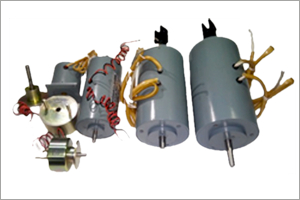

Our Push Pull Linear Solenoids use a plunger with an axial stroke to transform electrical energy into mechanical power.
High voltage applied to a wire coil creates a magnetic field in these transducers. Magnetic fields can be contained in space, so their intensity can be changed.
Linear solenoids that can be pushed or pulled can be unidirectional or bidirectional.
They have a shorter lifespan than rotary solenoids but are less expensive and occupy less space.
Buyers should consider maximum stroke, torque, and response time when purchasing.
Full stroke refers to the whole linear travel of the plunger inside the solenoid, from its fully extended position to its fully seated position.
The time required for a full plunger stroke with no external force is the response time.
At Push Pull Linear Solenoid Manufacturers in India, we have always believed that providing our clients with the greatest quality is essential.
One can use an electromechanical device called a push-pull linear solenoid to transform electrical energy into linear mechanical motion.
It can retract or extend a plunger (a metal rod) within the solenoid's housing when powered. Control systems, valves, actuators, brakes, clutches, and throttles use them.
Here's some more data on push-pull linear solenoids:
• You can get them in 12V, 24V, or 48V, among other voltages.
• The holding force (how much pressure the solenoid can apply to the plunger) and stroke length (how far the plunger can go) vary from model to model.
• They may have a "latch" that allows them to "hold" their position when the power is cut.
• Additional capabilities include the ability to provide position feedback or articulate motion.
• Pull solenoids. Insert the plunger into the solenoid's body in a manner that follows the electromagnetic current. Uses range from standard switchgear to valves, brakes, clutches, and throttles.
• Push solenoids to move the piston out of the solenoid body. The plunger is typically equipped with a spring return that returns it to the starting position.
You can also get solenoids that work in both directions (push and pull).
Conical and flat varieties exist. Medium- or long-stroke applications benefit most from the use of conical devices.
Short, powerful strokes are possible with balanced implements.
Push Pull Linear Solenoids can be either continuously operating or intermittently operating.
• Continuous duty solenoids are built for nonstop, demanding service. They are physically bigger and more long-lasting than intermittent solenoids.
• Intermittent duty solenoids can be used in on-and-off settings with a less than 100% duty cycle.
Best Push Pull Push Pull Linear Solenoids are available from Indian Precision Engineers ,Push Pull Linear Solenoid Manufacturers in India and their build characterises them.
• Open-frame solenoids are heat-dissipating devices in the shape of a box, C-frame, or D-frame with air gaps between the metal frames. Vending machines may use small, open-frame devices to dispense items.
• Tubular solenoids have a metal housing and form a tube. They're made to keep operational noise and flux leakage to a minimum.
• Low-force, long-life applications are ideal for the hinged form of clapper solenoids. Flapper is another name for them. Uses range from regulating the opening of a refrigerator's ice chute to manipulating a motorcycle's airbox flap.
• The magnetic field can form in a laminated solenoid with minimal eddy currents because of the solenoid's laminated frame and insulating laminations. While most solenoids require DC power, a silicon bridge rectifier allows laminated solenoids to operate on AC.